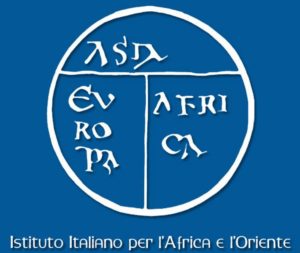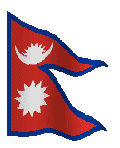Missione Archeologica in Nepal (1984-1989)

Negli anni compresi fra il 1984 e il 1989, Alessandro Grossato ha partecipato alla Missione Archeologica Italiana in Nepal. La Missione, diretta nei primi anni da Chiara Silvi Antonini e quindi da Giovanni Verardi, era organizzata dall’allora Istituto per il Medio ed Estremo Oriente di Roma (Is.M.E.O.), che divenne poi, nel 1995, l’Istituto Italiano per l’Africa e l’Oriente (Is.I.A.O.). In quell’ambito, Grossato si dedicò in particolare allo studio e all’interpretazione del ciclo iconografico contenuto nella camera reale dell’ex Palazzo Reale di Bhaktapur, nella Vallata di Kathmandu.
 Così scriveva nel suo primo rapporto, del dicembre 1984:
Così scriveva nel suo primo rapporto, del dicembre 1984:
“With regard to the large group of paintings that Mr Boenni began to restore (figs. 4-5), and in view of their present conditions, I can only say for the moment that: there is no doubt that it is a Krsnalila, i.e. a representation of various episodes in the earthly life of the eighth avatara of Visnu, whose bluish complexion often appears in the painted episodes. The direct literary reference, which cannot for the moment be identified with any accuracy, is perhaps a work written in Newari (as seems to be indicated by the almost illegible legends written in Newari that accompany nearly all the episodes represented). This work is probably a sylloge of several different traditional Sanskrit texts, particularly the Mahabharata, the Bhagavata Purana and the Gita govinda. In this connection it could be extremely useful to solicit the collaboration of at least two well-known local epigraphists, Messrs Hem Raj Sakya and Satya Mohan Joshi (the latter was introduced to me by Prof. J. Sharma). The large polycephalous figure at the centre of the N wall is without doubt a representation of Visnu Visvarupa, and refers to the well-known episode of the Bhagavad Gita, in which Krisna manifests to Arjuna his macrocosmic form. It is in any case a truly unusual and interesting iconographic variant since the God is depicted embracing his Sakti. It thus consists of a particularly rich and complex tantric representation, the exegesis of which will call for a detailed study of the specific vaisnava tendencies active in Nepal at the time the paintings were commissioned. As far as the date is concerned, the one suggested by local tradition seems perfectly acceptable to me: the commissioning of these wall paintings is attributed to the king of Bhaktapur, Bhupatindra Malla. In any case, the attribution of the paintings to the beginning of the 18th century seems to be supported by the considerable similarity in the content and style with the scrolls preserved respectively at Cambridge and Benares, and partially reproduced in Vaisnava Iconology in Nepal (Calcutta 1970) by Pratapaditya Pal. Indeed, in all likelihood, it was one of these scrolls that provided the exempla for the craftsmen executing these actual miniature murals. It would therefore be very interesting to be able to examine the Cambridge and Benares specimens directly, later making a detailed survey of everything likely to be contained in the well-appointed ‘Durbar Library’ in Kathmandu. Quite clearly it would also be very useful to be able to make a comparison with the Krsnalila painted in one of the ‘forbidden rooms’ of the Hanumandhoka Palace, again in Kathmandu.” (Alessandro Grossato, “Preliminary Report on the first Campaign for the Preservation and Study of the Mural Paintings in the Royal Palace of Bhaktapur Preservation”, scritto assieme ad Eugenio Galdieri e Raimondo Boenni, pubblicato suEast and West, Vol. 34, No. 4 (December 1984), pp. 547-558 | Stable URL: http://www.jstor.org/stable/29758168)